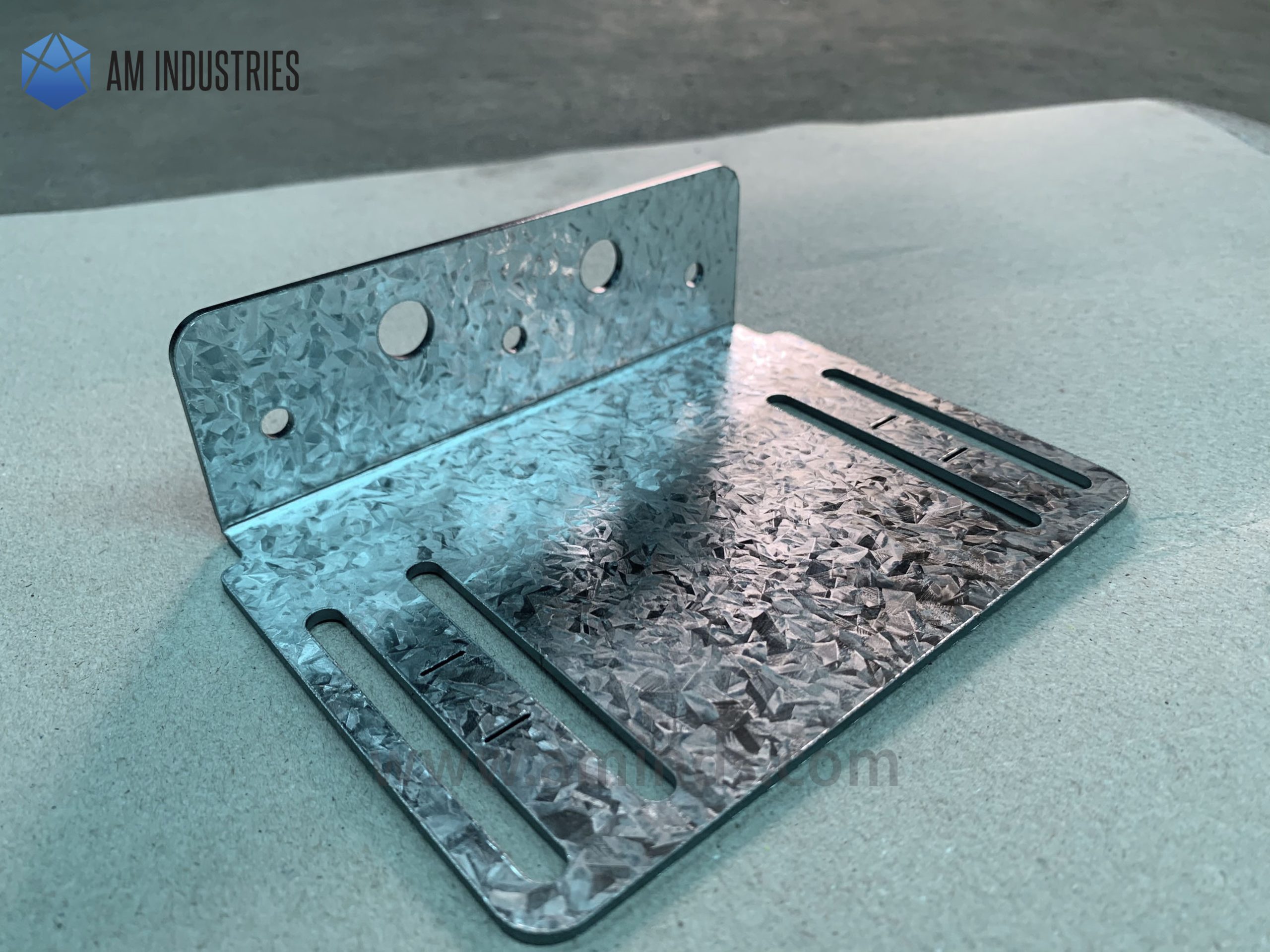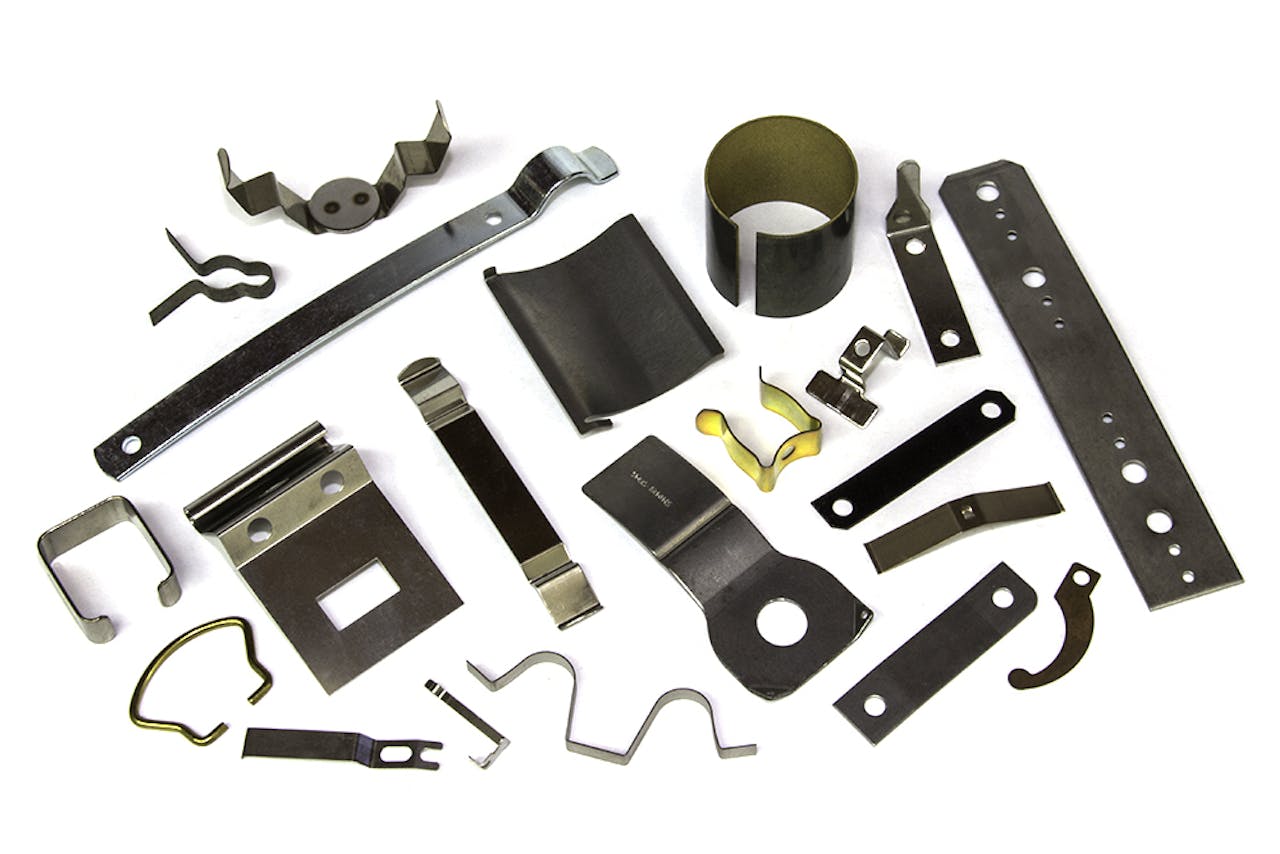Opening the Power of Steel Stamping: Approaches for Boosted Item Growth
In the realm of manufacturing, the use of metal marking holds a significant place as a result of its flexibility and performance in generating intricate parts and components. Nonetheless, real potential of steel marking remains untapped by many firms looking for to improve their product growth procedures. By exploring sophisticated methods and strategies tailored to maximize layout, product selection, manufacturing efficiency, and quality control, companies can unlock a wide range of chances to elevate their products to brand-new heights of advancement and efficiency.
Benefits of Steel Stamping
Steel marking offers a affordable and reliable approach for producing premium metal parts. This production process includes shaping, cutting, or creating metal sheets using a marking press (Metal Stamping). One of the essential benefits of metal stamping is its ability to produce complicated geometries with high accuracy and uniformity. This is especially beneficial for markets such as vehicle, aerospace, and electronic devices, where detailed metal components are usually needed.
Furthermore, steel stamping permits high-volume production, making it ideal for jobs that need huge quantities of steel components. The speed and repeatability of the stamping process not just make certain cost financial savings yet likewise add to faster turn-around times for manufacturing orders. Additionally, making use of computerized tools in metal marking assists minimize the danger of human mistake, leading to improved total item top quality.

Style Optimization Strategies
With cautious factor to consider of product residential or commercial properties and geometric arrangements, layout optimization techniques play an essential duty in enhancing the efficiency and capability of metal stamping processes. By tactically assessing aspects such as material thickness, stamina, and type, manufacturers can tailor the layout to take full advantage of the efficiency of the stamping operation. Utilizing simulation software application, designers can anticipate how various style variations will act under different stamping conditions, enabling the identification of potential issues prior to manufacturing starts.
Additionally, incorporating attributes like fillets, chamfers, and embosses right into the layout can improve the total high quality of the stamped component while minimizing the risk of flaws such as deforming or breaking. In addition, maximizing the design of functions on the part can boost the material circulation during stamping, resulting in more specific and constant results.
Fundamentally, design optimization techniques make it possible for manufacturers to adjust their steel stamping processes, resulting in boosted product quality, boosted production effectiveness, and ultimately, a more competitive setting out there.
Product Choice Methods
Design optimization techniques in metal marking procedures heavily count on calculated product option strategies to ensure the desired efficiency and performance of the manufactured parts. The option of material in steel stamping is essential as it straight affects the high quality, toughness, and total performance of the end product. When picking the suitable product for a details visit our website task, factors such as mechanical buildings, cost-effectiveness, deterioration, and formability resistance have to be considered.

In addition, cost-effectiveness plays a significant role in material option techniques. Stabilizing the performance requirements with the general price of materials is necessary to make sure the financial feasibility of the production process. Additionally, taking into consideration factors like recyclability and environmental effect can even more enhance the sustainability of the picked material. By carefully evaluating these elements, makers can optimize their product selection techniques to achieve remarkable product quality and operational performance.
Enhancing Production Efficiency
Effectiveness in production procedures is a crucial variable for ensuring cost-effectiveness and prompt delivery of top notch steel stamped components. To improve production efficiency in metal marking, numerous approaches can be carried out. One vital strategy is optimizing the tooling design to decrease material waste and minimize production time. By utilizing innovative simulation software, suppliers can fine-tune the tooling and analyze style prior to real manufacturing, thus improving the stamping procedure and improving total effectiveness.
In addition, carrying out automation and robotics in steel stamping operations can dramatically enhance performance and consistency while decreasing labor expenses. Automated systems can perform repeated jobs with high accuracy and speed, resulting in boosted production effectiveness and higher result rates. Buying modern-day stamping devices with innovative functions, such as servo-driven presses and quick die change systems, can even more enhance production processes and lessen downtime.
Furthermore, developing clear interaction networks and promoting cooperation in between engineering, design, and manufacturing groups is important for identifying potential traffic jams and executing constant improvements in the production workflow - Metal Stamping. By welcoming lean manufacturing principles and leveraging modern technology innovations, makers can More hints unlock the full capacity of steel marking processes and achieve better manufacturing effectiveness
Quality Assurance and Examination Techniques
To guarantee the consistent production of top quality metal marked components, strenuous quality assurance and assessment techniques play a crucial role in confirming the precision and honesty of the production process. Quality control in steel stamping entails a series of organized checks and steps to guarantee that each component fulfills the specified demands. Inspection techniques such as aesthetic examination, dimensional evaluation, and material screening are frequently utilized to assess the quality of stamped elements. Aesthetic inspections guarantee the surface finish and stability of the parts, while dimensional evaluation validates that the components comply with the required requirements. Product testing methods like hardness screening and material make-up analysis help validate the material residential or commercial properties and architectural integrity of the stamped components. Furthermore, advanced modern technologies such as automated optical evaluation systems and coordinate determining makers are increasingly being made use of to boost the accuracy and efficiency of quality assurance processes in metal marking. By executing durable quality assurance and examination approaches, makers can promote high standards of quality and consistency in their metal stamped straight from the source products.
Conclusion
In conclusion, metal marking offers countless benefits such as cost-effectiveness, precision, and versatility in product development. Overall, opening the power of steel stamping needs a critical approach to enhance product development procedures.
Steel marking offers a reliable and economical approach for generating top notch steel components.In addition, steel stamping enables for high-volume production, making it optimal for jobs that require big amounts of steel elements.Via careful consideration of material residential properties and geometric configurations, design optimization methods play a crucial duty in enhancing the performance and performance of steel stamping processes.Layout optimization strategies in steel marking processes heavily rely on strategic product option methods to ensure the preferred efficiency and efficiency of the produced parts. The option of material in steel marking is critical as it directly impacts the top quality, resilience, and overall capability of the last product.
Comments on “Experience the Advantages of Metal Stamping in Industrial Production”